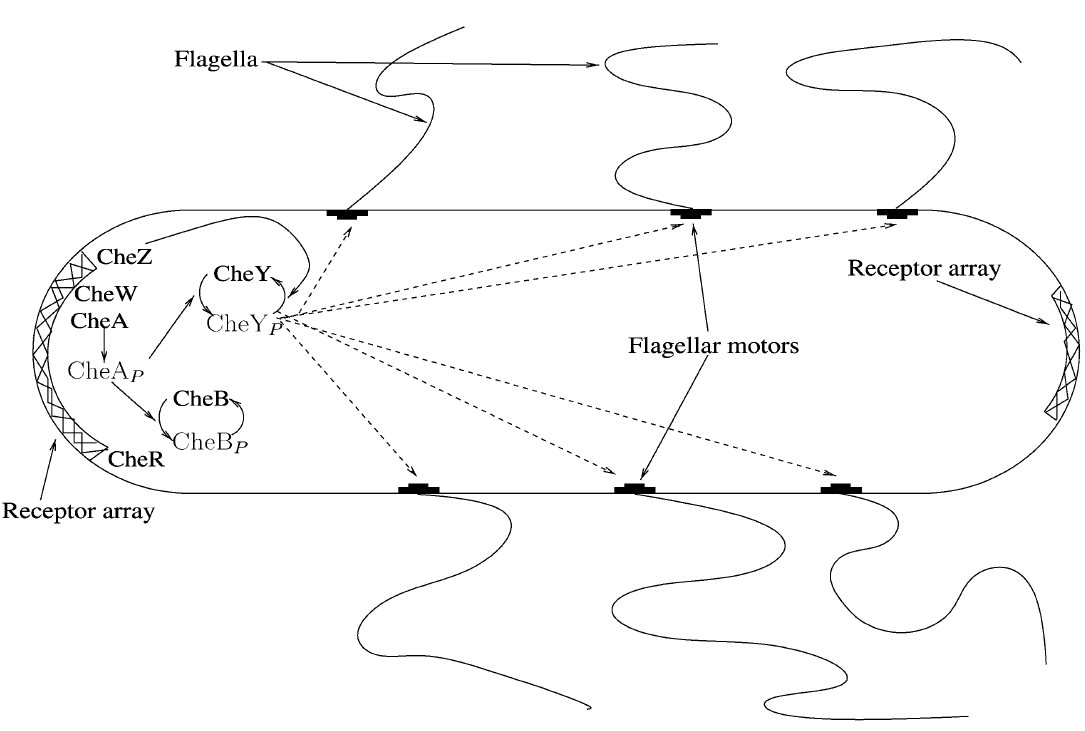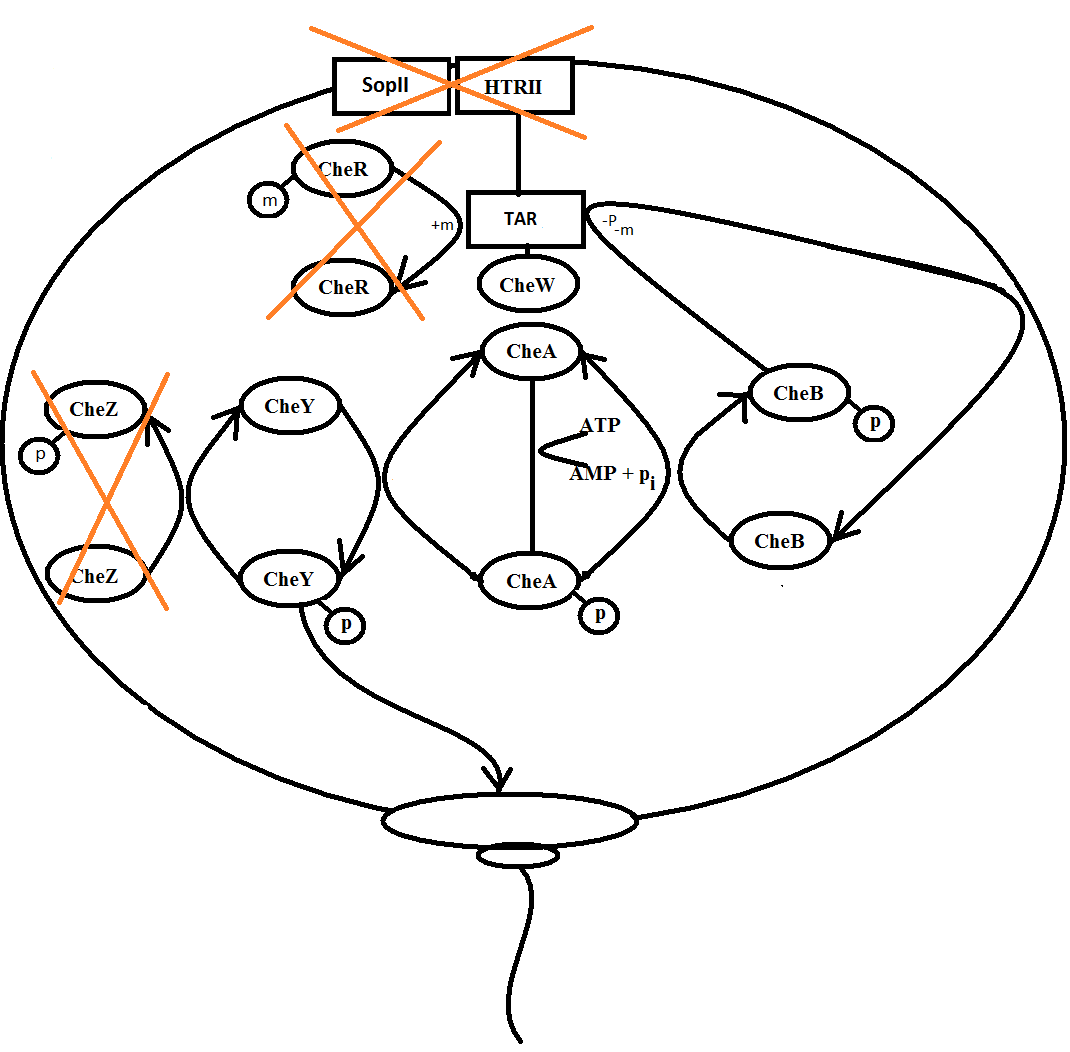Team:SDU-Denmark/project-bc
From 2010.igem.org
(Difference between revisions)
(→3. Description of the model) |
(→2. The real system) |
||
| Line 15: | Line 15: | ||
<p style="text-align: justify;">Several chemosensory systems exists in bacteria, the one most studied is the chemotaxis of E. coli. Polar clusters of membrane-spanning methyl accepting chemotaxis proteins (MCPs) are positioned in the ends of the rod shaped E. coli.<br> | <p style="text-align: justify;">Several chemosensory systems exists in bacteria, the one most studied is the chemotaxis of E. coli. Polar clusters of membrane-spanning methyl accepting chemotaxis proteins (MCPs) are positioned in the ends of the rod shaped E. coli.<br> | ||
Tar (responding to aspartate), Tsr (responding to serine), Tap (responding todipetides), Trg (responding to galactose) ang Aer (responding to oxygen) are the most common receptors seen in E. coli strains.<br> | Tar (responding to aspartate), Tsr (responding to serine), Tap (responding todipetides), Trg (responding to galactose) ang Aer (responding to oxygen) are the most common receptors seen in E. coli strains.<br> | ||
| - | Transduction of the signal between the MCPs and the flagella motor are managed by a particular fined tuned signalling cascade, which is governed by several intracellular proteins.<br> | + | Transduction of the signal between the MCPs and the flagella motor are managed by a particular fined tuned signalling cascade, which is governed by several intracellular proteins.<br></p> |
[[Image: Team-SDU-Denmark-Chemotaxis.png |500px |center]] | [[Image: Team-SDU-Denmark-Chemotaxis.png |500px |center]] | ||
| - | Chemotaxis consists of three important phases reaction, adaptation and relaxation. In the reaction phase one of the MCPs sence the specific chemical gradient it responds to, the membrane protein activates the CheW enzym.<br> | + | <p style="text-align: justify;">Chemotaxis consists of three important phases reaction, adaptation and relaxation. In the reaction phase one of the MCPs sence the specific chemical gradient it responds to, the membrane protein activates the CheW enzym.<br> |
The active CheW enzyme suppresses the auto-phophorylation of the CheA enzyme, when no or only a small amount of CheA enzymes are phosphorylated, no phophorylation of the CheY and CheB enzyme accurse, which in the end increases run, because its phosphorylated CheY that binds to the flagella motors and induce tumbling.<br> | The active CheW enzyme suppresses the auto-phophorylation of the CheA enzyme, when no or only a small amount of CheA enzymes are phosphorylated, no phophorylation of the CheY and CheB enzyme accurse, which in the end increases run, because its phosphorylated CheY that binds to the flagella motors and induce tumbling.<br> | ||
When the bacteria have reached the area with a higher concentration of the chemical creating the gradient adaptation sets in.<br> | When the bacteria have reached the area with a higher concentration of the chemical creating the gradient adaptation sets in.<br> | ||
Revision as of 14:01, 24 October 2010
 "
"

